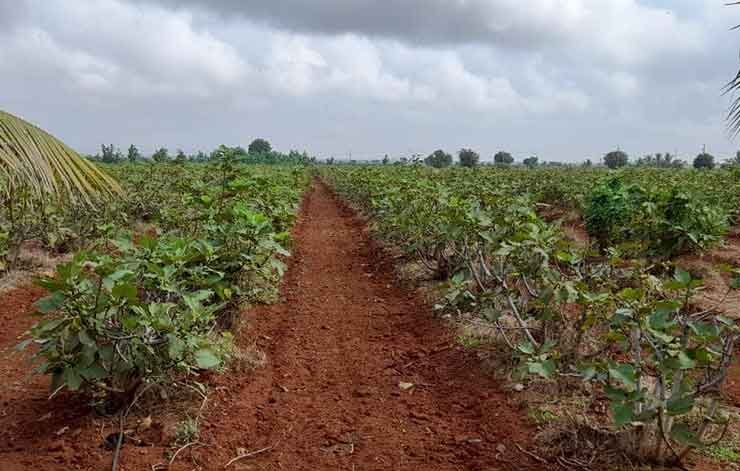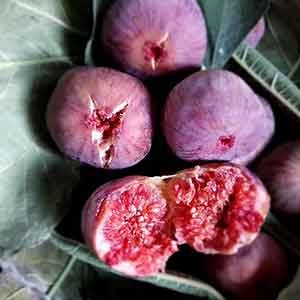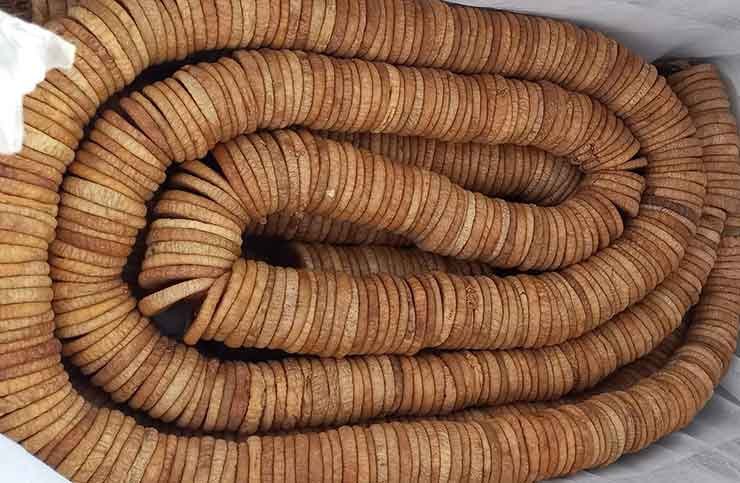Fig is a very good drought tolerant crop which can be grown on soil with high levels of chloride and sulphate. With increasing demand, fig farming can be a profitable venture in India.
Fig or Anjeer is a very nutritious fruit and has medicinal values. It is rich in fibre, calories, proteins, calcium and iron. Globally fig is consumed in dried form but in India most of the produce goes unprocessed and consumed fresh and as a vegetable.
Fig Tree Overview
| Scientific Name | Ficus carica |
| Common Name | Anjeer, Dumur |
| Soil | Well-drained medium to heavy deep calcareous soil with pH range between 7.0-8.0 is ideal. Tolerant to few salts in soil. |
| Climate | Considerably climate sensitive but drought tolerant crop. Dry arid or semi-arid climate with 4o-39oC is best suited. |
| Harvest | Harvesting starts within 3 years after planting and the economic life is around 30-35 years. |
| Yield | 18-20 kg/plant from 8th year onwards |
| Crop Type | Fruit |

Potential Area
Fig is globally produced in the USA and Israel, Spain, Greece, Egypt, Turkey, Morocco, etc. countries with Mediterranean climate. In India, anjeer is mostly grown in a few pockets in Uttar Pradesh, Gujarat, Karnataka and Tamil Nadu but can be cultivated in other states with arid or hot dry climates. Slopes of hills and coastal areas with high humidity should be avoided.
Fig Cultivation Process
There are 600-800 varieties of figs around the world which are divided into 4 categories according to sex and flowering. Commercially cultivated Indian figs are mostly ‘common’ fig. Popular varieties in India are Poona, Brown Turkey, Conardia, Mission Kadota, Dinkar, etc.
Fig plants can be propagated through seeds, cutting, grafting, layering and tissue culture but in India hardwood cutting is the most popular method for bulk propagation. Aged well sized hardwood cuttings are rooted in grow bags and thereafter planted in the fields.
A pit with a size of 2ft X 2ft X 2ft is dug and left open for 2 weeks for solarization before filling with topsoil, sand, compost and neem cake. The planting process is carried on at the beginning of the monsoon season.
Spacing
Though fig suffers less from diseases optimum spacing can reduce pests and diseases and increase yield. Below are the most popular spacing followed in India.
| Spacing | Plants/acre |
| 20ft X 20ft | 108 |
| 16ft X 23ft | 118 |
| 16ft X 16ft | 170 |
Fig Plantation Care & Management
Annual pruning is done to train fig trees to a single stem, strong and high fruit bearing plant. Farmyard manure, neem cake and NPK are applied in two splits in fig plantations,first half after pruning and second half during fruiting. Fig is a drought resistant plant and it does not require much water to sustain but to get high yield in commercial plantations 2-3 irrigation per month is ideal. Unlike other crops irrigation during fruiting is harmful as it leads to fruit splitting.
Fig is affected by very few pests and diseases like stem borers, fig flies, leaf defoliators, etc. These pests can be controlled easily. Overpruned fig plants are affected by sunburn. Another disorder is fruit splitting which can be reduced by efficient irrigation.
Harvesting and Yield

February to June is the harvesting season and the harvesting is done manually 2-3 times a week. Globally the fruit is harvested when fully ripe and dropped but in India it is picked manually when the fruit is partially matured.
Fig trees start bearing fruits within 1 year but commercial harvesting starts at 3rd year. The yield per plant grows gradually from 3-5 kg in the 3rd year to 18-20 kg in the 8th year before it stabilises.
Should You Grow Fig?
Reasons to Grow Fig
- A perfect crop for dryland arid areas. Anjeer can also be grown on soil with high chloride and sulphate salts.
- Highly nutritive fruit and used also as a medicine. In the current scenario of pandemic and growing health consciousness demand for fig is increasing.
- Outstanding prospect for processing and exporting fig to high-value markets like the EU.
Reasons Not to Grow Fig
- Lack of quality planting materials.
- Marketing without processing could be a challenge as fresh fig is very delicate and has a low shelf-life.
- Current growers are getting premium prices for fig. But, the area under fig production is growing considerably. This may lead to overproduction and drop in price in future.

A Sample Fig Cultivation Project
This is a sample fig cultivation project on 1 acre of land. A plant spacing of 16ft X 16ft will be followed accommodating 170 plants/acre. Cost per plant and wholesale mandi price of fresh fig is considered Rs. 40 and Rs. 100/kg respectively. Labour per manday is assumed Rs. 300.
Fig Farming Profit
| Item | 1st Year | 2nd Year | 3rd Year | 4th Year | 5th Year | 6th Year | 7th Year | 8th Year |
| Income | ||||||||
| Yield per plant (kg) | 0 | 0 | 5 | 10 | 13 | 15 | 18 | 20 |
| Yield per acre (kg) | 0 | 0 | 850 | 1,700 | 2,210 | 2,550 | 3,060 | 3,400 |
| Total Income | 0 | 0 | 85,000 | 1,70,000 | 2,21,000 | 2,55,000 | 3,06,000 | 3,40,000 |
| Expenditure | ||||||||
| Land preparation | 1,800 | 0 | 0 | 0 | 0 | 0 | 0 | 0 |
| Digging and filling up pits and planting | 6,900 | 0 | 0 | 0 | 0 | 0 | 0 | 0 |
| Planting material | 6,800 | 0 | 0 | 0 | 0 | 0 | 0 | 0 |
| Plant supporting material | 1,200 | 0 | 0 | 0 | 0 | 0 | 0 | 0 |
| Fertilisers and manures | 10,500 | 9,000 | 9,000 | 9,000 | 9,000 | 9,000 | 9,000 | 9,000 |
| Pesticides | 1,500 | 1,200 | 1,200 | 1,200 | 1,200 | 1,200 | 1,200 | 1,200 |
| Irrigation | 13,000 | 13,000 | 13,000 | 13,000 | 13,000 | 13,000 | 13,000 | 13,000 |
| Harvesting | 0 | 0 | 1,800 | 1,800 | 1,800 | 1,800 | 1,800 | 1,800 |
| Manpower for maintenance | 4,000 | 6,600 | 6,600 | 6,600 | 6,600 | 6,600 | 6,600 | 6,600 |
| Total Expenditure | 45,700 | 29,800 | 31,600 | 31,600 | 31,600 | 31,600 | 31,600 | 31,600 |
| Net Income | -45,700 | -29,800 | 53,400 | 1,38,400 | 1,89,400 | 2,23,400 | 2,74,400 | 3,08,400 |
First commercial harvest can be taken at the 3rd year and from the 8th year the yield stabilises. The cost of fig cultivation can be reduced by utilising the government subsidy.
FAQs
Fig farming is a highly profitable business. Fig farmers earn Rs. 3 lakh per acre profit.
Fruiting starts as early as 1-2 years but fig trees take 3-5 years for commercial grade harvesting.
how much season take in one year?
and which time is better in fig cultivation?